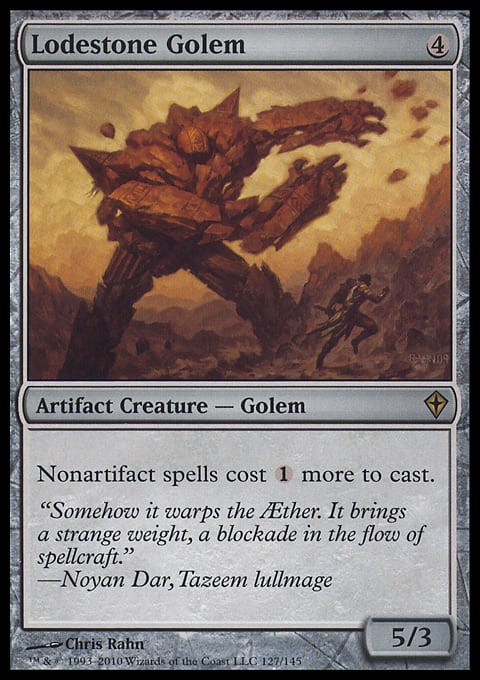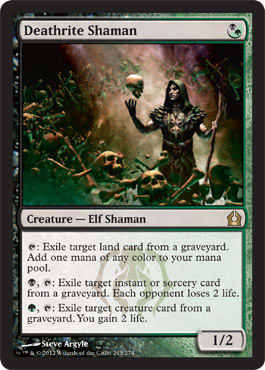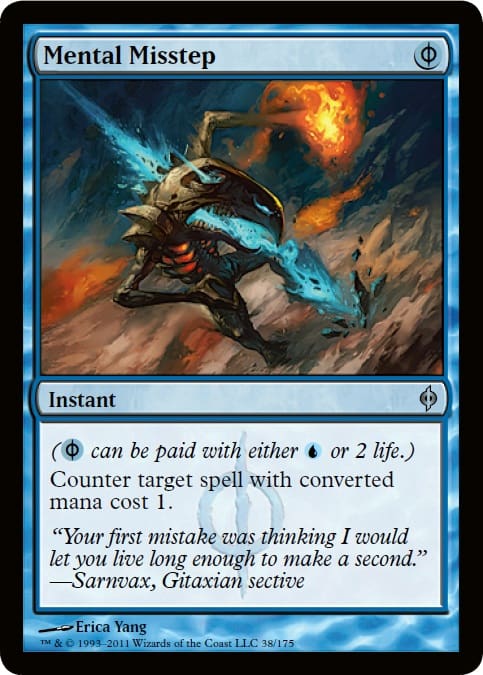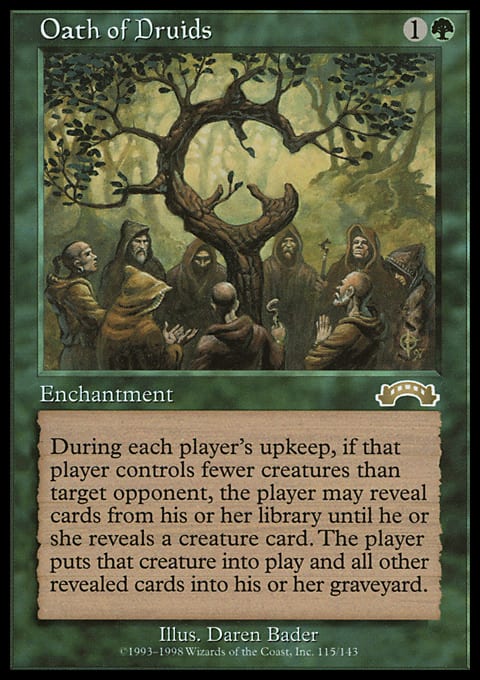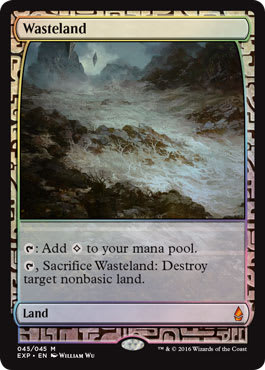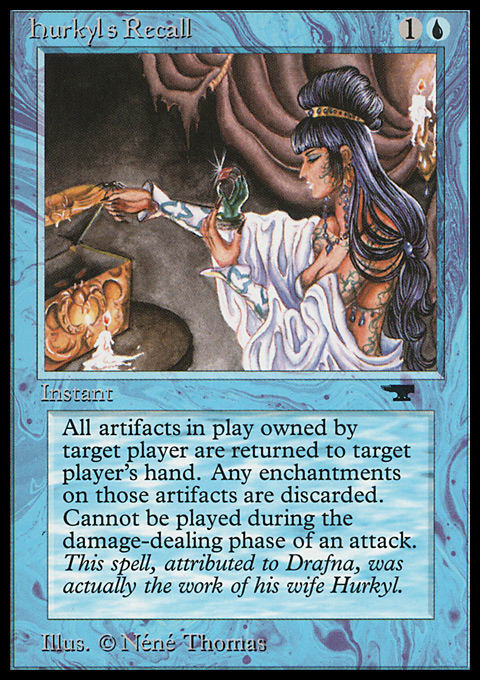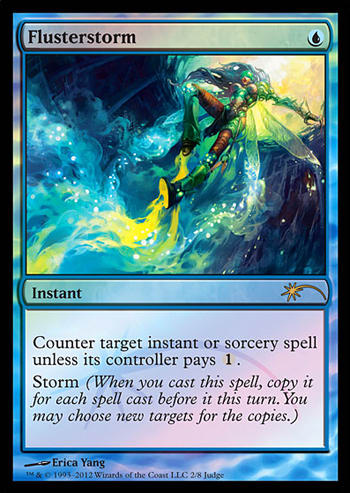Looking back through the history of Vintage Magic: The Gathering, it’s evident that the best decks have largely been those playing blue cards. Mana Drain, Gush, Gifts Ungiven, and Force of Will have been at or near the top of the standings for most of the format’s run. Only recently has that leadership begun shifting to Mishra's Workshop, starting with the printing of Lodestone Golem, and continuing with cards like Kuldotha Forgemaster and Hangarback Walker.
This shift has made many Vintage players who prefer blue cards very angry. Sphere of Resistance effects, including the aforementioned Golem and Thorn of Amethyst, tax spells to the point of unplayability, making it difficult to interact, especially in Vintage , a format in which some of those spells (namely Moxes and other artifacts) are a significant part of the mana base. As it turns out, for these players, using counterspells is okay; making spells unplayable is not.
Worse still, combo players have opened up a second front on blue decks with the rise of Dark Petition Storm. Instead of attacking mana development like a Shops deck, Storm ignores traditional development completely, building storm and mana with Dark Ritual and Moxes so it can play Dark Petition with spell mastery for something big like Yawgmoth's Will or Necropotence. Along the way, it tears apart an opponent’s hand with discard, including sometimes the combo of Gitaxian Probe and Cabal Therapy.
Here again, without Force of Will or other (and varied) cheap counters like Mental Misstep and Flusterstorm, the game can be uninteractive. In fact, without any of these cards, it could just be over before an opposing blue player has a turn.
Of course, complaining about opponents’ decks won’t get results until the restricted list is updated, and maybe not even then. Shops and Storm are the current bogeymen of the format, and players need results against them now, on the battlefield. I hope to outline a few tips and potential decklists to that end.
Start with a Solid Mana Base
Against Shops, starting with fewer than twenty-two mana sources is asking for trouble, especially if some of those sources are temporary like Lotus Petal or Wasteland. I’d try to get even more. Some of the lists below have twenty-four or twenty-five. Basic lands are a premium since they aren’t Wasteland targets, and alternate mana sources and acceleration (for example, Deathrite Shaman) are particularly good to keep up with Spheres.
Mana is important against Storm as well because, as the game goes longer, you may need to play a draw spell or tutor and still hold up mana to counter. You may also need extra mana to counter multiple things or to counter after a draw-seven like Timetwister.
Efficient Spells Are Good
This shouldn’t be a surprise since it holds throughout Magic. Don’t pay more for an effect than you have to, either in mana or in cards. Try to get more for less! It’s often better to Steel Sabotage or Ingot Chewer than it is to Force of Will against Shops, and it’s better to Mental Misstep than to Force of Will against Storm. A permanent answer like Energy Flux, Null Rod, or Thalia, Guardian of Thraben, will often do more work than a one-for-one against either opponent.
I’ll also say that several Shops players have said to me that Hurkyl's Recall is the scariest card to face, and a 2-mana sweeper is very efficient.
Play Cheap Threats
Threats lead directly to an actual win: Oath of Druids and Tinker, for example, or Young Pyromancer and Delver of Secrets. Threats in this case do not include tutors and draw spells, which have their own important places in these matchups.
Against Shops, the goal is to come in under a Workshop opponent’s Sphere effects. Be able to hold the ground against opposing creatures or just win the game with something big like Griselbrand. Against Storm, the goal is to disable the opponent’s combo plan with well-placed counters or discard and then win when the opponent can’t stop you. In either case, you want to close quickly.
Hit the Opponent’s Mana
Like most decks, Shops and Storm lean on their mana. Shops has to play through its own Sphere effects, too, and it has big mana-producers like Mishra's Workshop and Ancient Tomb to do so. Storm’s primary goal is to play a 5-drop sorcery, so it needs all of the mana it can muster. In either case, Wasteland (particularly against Shops) and Null Rod or Stony Silence (particularly against Storm, or Shops with Arcbound Ravager, or Kuldotha Forgemaster) can be a key to victory.
Avoid Dead Cards
Try to avoid cards that are dead in either matchup. This is difficult. Some cards that are very good against Storm decks are very bad against Shops: Mental Misstep and Flusterstorm, for example. Similarly, cards like Hurkyl's Recall are great against Shops but do little against Storm.
Consider more cards that pull double-duty, like Spell Pierce (remember that Mishra's Workshop can’t pay for Spell Pierce) or Dack Fayden. Dack costs 3 and isn’t a cure-all against Shops, but it’s very powerful if it resolves; against Storm, Dack can filter cards to find more counterspells.
If you’re planning on playing Vintage, online or in cardboard, and you think most of your opponents are going to be playing Mishra's Workshop or Storm decks, consider how all of your cards meet these recommendations. In the past, most decks were essentially pre-sideboarded against blue opponents—19 mana and a lot of Flusterstorms and Mental Missteps for example—and that made sense when half or more of the field was blue. Now it might be wise to take things in a different direction.
Decks Held Up as Examples
Odd Oath ? Vintage | Rich Shay
- Creatures (3)
- 1 Inferno Titan
- 1 Void Winnower
- 1 Griselbrand
- Planeswalkers (3)
- 1 Dack Fayden
- 2 Jace, the Mind Sculptor
- Spells (37)
- 1 Ancestral Recall
- 1 Ancient Grudge
- 1 Brainstorm
- 1 Dig Through Time
- 1 Flusterstorm
- 1 Mindbreak Trap
- 1 Vampiric Tutor
- 3 Mental Misstep
- 4 Force of Will
- 1 Demonic Tutor
- 1 Ponder
- 1 Time Walk
- 1 Treasure Cruise
- 1 Yawgmoth's Will
- 2 Thoughtseize
- 3 Gitaxian Probe
- 1 Pernicious Deed
- 4 Oath of Druids
- 1 Black Lotus
- 1 Mana Crypt
- 1 Mox Emerald
- 1 Mox Jet
- 1 Mox Pearl
- 1 Mox Ruby
- 1 Mox Sapphire
- 1 Sol Ring
- Lands (17)
- 1 Island
- 1 Strip Mine
- 1 Tropical Island
- 1 Underground Sea
- 1 Volcanic Island
- 2 Flooded Strand
- 2 Polluted Delta
- 3 Mana Confluence
- 4 Forbidden Orchard
- 1 Tolarian Academy
- Sideboard (15)
- 1 Abrupt Decay
- 2 Mindbreak Trap
- 4 Tormod's Crypt
- 2 Nature's Claim
- 2 Nihil Spellbomb
- 1 Steel Sabotage
- 2 Ancient Grudge
- 1 Elesh Norn, Grand Cenobite
Rich Shay has a nice write-up thread about this deck, in which he explains its creation specifically to beat Shops and Storm. This is a newer version, which made Top 8 at the January Power Nine Challenge on Magic Online. Oath is a great potential threat right now since it’s easy to play on turn one or through Sphere effects. More importantly, the three creatures—Griselbrand, Inferno Titan, and Void Winnower—have game-dominating effects against Shops and Storm without losing ground against most blue decks.
I particularly like the Pernicious Deed as a board-sweeper against Shops, even though it won’t do much against Storm. That card hasn’t been a big player in Vintage recently, but it’s starting to climb against artifact and token strategies. Rich has recommended running multiple copies.
U/R/b Painter ? Vintage | Andy Probasco
- Creatures (6)
- 1 Blightsteel Colossus
- 3 Painter's Servant
- 2 Jace, Vryn's Prodigy
- Planeswalkers (1)
- 1 Dack Fayden
- Spells (37)
- 1 Ancestral Recall
- 1 Brainstorm
- 1 Dig Through Time
- 2 Gush
- 3 Mental Misstep
- 3 Thirst for Knowledge
- 4 Force of Will
- 4 Pyroblast
- 1 Demonic Tutor
- 1 Time Walk
- 1 Tinker
- 1 Treasure Cruise
- 1 Yawgmoth's Will
- 2 Duress
- 1 Black Lotus
- 1 Mana Crypt
- 1 Mox Emerald
- 1 Mox Jet
- 1 Mox Pearl
- 1 Mox Ruby
- 1 Mox Sapphire
- 1 Nihil Spellbomb
- 1 Sol Ring
- 2 Grindstone
- Lands (16)
- 3 Island
- 1 Flooded Strand
- 1 Polluted Delta
- 1 Strip Mine
- 2 Underground Sea
- 3 Volcanic Island
- 4 Scalding Tarn
- 1 Tolarian Academy
- Sideboard (15)
- 1 Dack Fayden
- 1 Duress
- 1 Nihil Spellbomb
- 3 Ingot Chewer
- 3 Leyline of the Void
- 1 Mountain
- 2 Shattering Spree
- 3 Sulfur Elemental
Painter showcases one of the ways to avoid main-decked dead cards, using Painter's Servant to turn Pyroblasts into 1-mana Vindicates against Workshops. This gives the traditional blue hosers extra utility in all matches, and they do some work against Storm as well. Andy “Brass Man” Probasco, who piloted this list to Top 8 at the January Power Nine Challenge, said he doesn’t even ’board all of his Pyroblasts out against Shops.
Here also, the Painter-Grindstone combo is cheap to play in stages, making it easy to set up through Shops’s Sphere effects (especially with twenty-four mana sources and a twenty-fifth in the sideboard) or before Storm can recover from a suite of disruption spells. Sulfur Elemental also comes highly recommended against decks packing Monastery Mentor.
R/W Hatebears ? Vintage | Jake Hilty
- Creatures (32)
- 2 Goblin Sharpshooter
- 2 Goblin Welder
- 3 Containment Priest
- 3 Hammer Mage
- 3 Stoneforge Mystic
- 4 Simian Spirit Guide
- 4 Spirit of the Labyrinth
- 3 Phyrexian Metamorph
- 4 Phyrexian Revoker
- 4 Thalia, Guardian of Thraben
- Spells (10)
- 1 Lightning Bolt
- 1 Wear // Tear
- 2 Swords to Plowshares
- 3 Stony Silence
- 1 Lotus Petal
- 2 Batterskull
- Lands (18)
- 1 Mountain
- 2 Plains
- 1 Strip Mine
- 2 Windswept Heath
- 3 Plateau
- 4 Arid Mesa
- 4 Wasteland
- 1 Karakas
- Sideboard (15)
- 2 Path to Exile
- 1 Goblin Sharpshooter
- 3 Ingot Chewer
- 3 Sulfur Elemental
- 1 Containment Priest
- 1 Umezawa's Jitte
- 2 Pithing Needle
- 2 Aegis of the Gods
What beats Workshops? Hammer Mage beats Workshops! At least, that’s what Vintage aggro aficionado Jake Hilty would say. Jake’s decks has a lot of permanent answers to the format—Hammer Mage versus Shops, Thalia versus Storm, Containment Priest versus Oath and Dredge, and Spirit of the Labyrinth and Goblin Sharpshooter against Mentor, for example. Stony Silence and Phyrexian Revoker can hinder the mana of all of those decks as well, and it can be accelerated into play with Simian Spirit Guide.
The deck might not look to be the typical, blue Vintage powerhouse, but it could tear apart the right metagame. Every card does something and does it efficiently. An opponent—any opponent—can lose outright if the wrong 2-drop resolves.
W/U CounterTop ? Vintage | Will Wingler
- Creatures (4)
- 1 Snapcaster Mage
- 3 Monastery Mentor
- Planeswalkers (3)
- 3 Jace, the Mind Sculptor
- Spells (34)
- 1 Ancestral Recall
- 1 Brainstorm
- 1 Dig Through Time
- 1 Flusterstorm
- 1 Mana Drain
- 1 Mystical Tutor
- 2 Mental Misstep
- 2 Swords to Plowshares
- 2 Thirst for Knowledge
- 4 Force of Will
- 1 Ponder
- 1 Time Walk
- 1 Wear // Tear
- 3 Terminus
- 3 Counterbalance
- 1 Black Lotus
- 1 Mox Pearl
- 1 Mox Ruby
- 1 Mox Sapphire
- 1 Sol Ring
- 4 Sensei's Divining Top
- Lands (18)
- 1 Plains
- 2 Island
- 1 Library of Alexandria
- 2 Volcanic Island
- 3 Scalding Tarn
- 3 Tundra
- 4 Flooded Strand
- 1 Tolarian Academy
- 1 Seat of the Synod
- Sideboard (15)
- 1 Mountain
- 3 Grafdigger's Cage
- 1 Pyroblast
- 2 Ingot Chewer
- 2 Wear // Tear
- 2 Containment Priest
- 1 Swords to Plowshares
- 1 Flusterstorm
- 1 Mindbreak Trap
- 1 Steel Sabotage
CounterTop (that is, the combination of Counterbalance and Sensei's Divining Top, with Terminus) is starting to be ported into Vintage after success in Legacy, and it’s doing well. Obviously, the CounterTop combo (or even blind Counterbalance) is strong against Storm, in which most of the spells fall in a particular range. And Terminus is great against Shops, against which it can clear the board to buy more time to build mana and solidify control. Threats from either opponent can be countered or removed individually, and most games are won with an ultimate activation from Jace, the Mind Sculptor.
You can see the deck in action, played by Will Wingler, against Shops on YouTube from a recent tournament. The life totals may come close, but it’s obvious that the control deck never loses control. As usual, the last life point is the only one that matters.
All of this is to say that Vintage isn’t about to succumb to Shops and Storm, though it may be time for some players to rethink their approaches to the format. If the expected field no longer starts with fifty percent blue decks as it used to, adjust your main deck to match. Take some steps to make your deck stronger against what Vintage players are doing now. Vintage might be slow to change relative to other, younger formats, but the shift is evident.
Thanks for reading!
Nat Moes
















